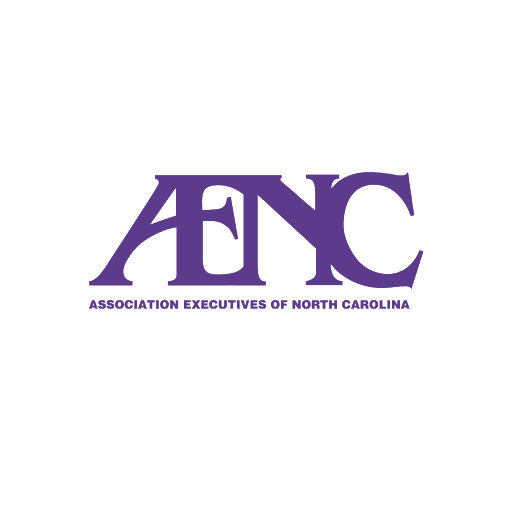How audio visual charlotte nc streamlines equipment management
Wiki Article
Recognizing the Incorporation of Audio Visual Modern technology in Today's Educational Environments
The integration of audio-visual technology in instructional setups has actually transformed the training and finding out process. Educators now have access to tools that deal with various finding out designs, boosting trainee engagement and collaboration. Nevertheless, the consolidation of these innovations provides both possibilities and obstacles. Recognizing how to properly apply these devices is vital. What approaches can instructors use to maximize the benefits of audio-visual modern technology in their classrooms?The Evolution of Audio-Visual Innovation in Education And Learning
As academic needs advanced over the years, audio-visual technology undertook significant makeovers that reshaped the knowing setting. At first, devices such as film projectors and slide shows were the main means of integrating visual components into classrooms. These very early modern technologies provided instructors with the capacity to present info dynamically, yet they were restricted in ease of access and interactivity.With the introduction of video cassette recorders in the 1970s, class started to integrate taped lessons, broadening the scope of instructional sources. The intro of computers in the 1980s further revolutionized this landscape, enabling the creation of multimedia discussions and interactive discovering experiences.
The increase of the internet in the 1990s noted an essential moment, allowing real-time accessibility to a wealth of audio-visual materials. Today, electronic tools such as interactive whiteboards and on-line discovering systems proceed to improve the academic experience, cultivating involvement and collaboration amongst learners.
Benefits of Audio-Visual Tools for Diverse Learning Styles
Audio-visual devices play an essential role in accommodating varied learning designs by improving aesthetic understanding and improving auditory interaction. By including pictures, videos, and sound, these technologies produce an even more comprehensive instructional atmosphere. This multifaceted method permits educators to deal with the varied preferences and needs of students efficiently.Enhancing Visual Understanding
Interaction in the learning process is noticeably enhanced via the usage of audio-visual devices, dealing with different learning designs. These tools, such as videos, infographics, and interactive discussions, provide visual stimulations that aid understanding and retention. Aesthetic learners, particularly, advantage from the consolidation of photos and animations, which can streamline complex ideas and improve understanding. Additionally, audio-visual resources can highlight real-world applications, making learning much more pertinent and engaging. By integrating color, activity, and sound, teachers can develop a dynamic discovering environment that catches pupils' attention and cultivates much deeper cognitive connections. Ultimately, the calculated use audio-visual technology not only supports visual discovering yet also enriches the general academic experience for diverse students.Improving Auditory Engagement
A considerable advantage of including audio-visual devices in education and learning is their capability to improve acoustic engagement among trainees. These tools, which encompass multimedia presentations, podcasts, and interactive audio elements, deal with numerous learning designs, particularly benefiting auditory students (audio visual charlotte nc). By integrating audio and narrative, instructors can develop immersive experiences that capture students' attention and reinforce understanding. This involvement is essential, as it fosters a deeper understanding of the product and advertises retention. Furthermore, audio-visual tools can help with collaborative learning environments, encouraging pupils to take part in conversations and share their understandings. Eventually, the incorporation of audio-visual technology not just sustains auditory engagement however likewise enriches the total academic experience, making discovering more vibrant and efficient for all studentsEnhancing Engagement Via Interactive Discovering

Gamification components, such as tests and simulations, can improve motivation and retention, making discovering extra pleasurable and reliable. These approaches not only promote cognitive involvement but likewise satisfy varied learning styles, making sure that all pupils can participate meaningfully. Consequently, interactive discovering settings foster a sense of neighborhood and belonging, eventually bring about boosted academic outcomes. Through the combination of audio aesthetic modern technology, instructors can change traditional classrooms into vibrant areas where trainees prosper and proactively form their educational journeys.
Connecting Concept and Exercise With Multimedia Resources
Multimedia resources work as a critical web link in between academic principles and practical application in educational settings. By boosting involvement, assisting in collective discovering experiences, and sustaining diverse discovering designs, these tools produce a more inclusive and vibrant understanding setting - audio visual charlotte nc. This technique not just promotes deeper understanding but additionally prepares pupils for real-world obstacles
Enhancing Involvement With Multimedia
Interaction in educational setups considerably boosts when instructors incorporate multimedia sources into their mentor strategies. The use of videos, podcasts, and interactive presentations enhances the discovering experience, enabling trainees to link with the material on several levels. Multimedia resources satisfy various learning styles, supplying visual, auditory, and kinesthetic stimulations that can hold trainees' attention more efficiently than standard lecture approaches. In addition, these resources can simplify complicated concepts, making them much more available and remarkable. By integrating multimedia, instructors can create a vibrant class atmosphere that cultivates curiosity and inspires students. Ultimately, the critical use audio-visual innovation offers to bridge the void between theoretical expertise and practical application, enriching the academic experience for both teachers and trainees.Promoting Collaborative Discovering Knowledge
Various researches indicate that collective discovering experiences significantly enhance trainee end results when integrated with multimedia resources. Multimedia devices promote interaction among trainees, permitting them to engage in analytic and critical thinking collectively. By making use of video conferencing, collaborative systems, and interactive discussions, educators produce atmospheres favorable to team effort and shared discovering. These modern technologies make it possible for pupils to communicate their ideas effectively and receive immediate feedback, fostering a deeper understanding of the subject. In addition, multimedia resources can offer intricate principles in even more absorbable styles, promoting discussion and partnership. Because of this, the combination of joint understanding and audio-visual innovation not just improves the educational experience however additionally prepares pupils for real-world synergy characteristics, stressing the relevance of cooperation and collective understanding building.Supporting Diverse Discovering Styles
While typical mentor techniques commonly satisfy a minimal variety of discovering preferences, the integration of audio-visual modern technology uses a much more inclusive strategy to education and learning. By utilizing multimedia resources such as video clips, interactive simulations, and electronic presentations, instructors can resolve different learning designs, including aesthetic, acoustic, and kinesthetic. This flexibility enables set apart direction, enabling pupils to engage with web content in manner ins which reverberate with their private choices. Furthermore, audio-visual devices can help with much deeper understanding by supplying multiple representations of intricate ideas. Therefore, trainees that may fight with traditional methods can discover alternative pathways to success, cultivating a much more fair discovering environment that sustains scholastic accomplishment for all students.Difficulties in Applying Audio-Visual Technology
Although audio-visual modern technology holds wonderful guarantee for boosting academic experiences, its execution typically experiences substantial challenges. One primary worry is the monetary burden related to buying and preserving such tools, which can stress budgets, particularly in underfunded establishments. Furthermore, insufficient training for instructors can prevent efficient integration, leaving them ill-prepared to make use of the modern technology fully. Technical concerns, such as software application breakdowns and compatibility problems, may additionally interfere with lessons and frustrate both educators and students. Additionally, differing degrees of pupil access to innovation outside the classroom can develop differences in discovering chances. Finally, the potential for over-reliance on technology may diminish important mentor techniques, eventually restricting the educational experience. find out here now Attending to these challenges requires a complete method, including sufficient financing, specialist growth, and equitable access to resources, to ensure that audio-visual innovation can be leveraged successfully in today's educational settings.Finest Practices for Integrating Technology in the Class

Additionally, cultivating an interactive environment through collaborative devices encourages pupil engagement and involvement. Making use of varied audio-visual resources deals with numerous learning designs, fitting visual, auditory, and kinesthetic students. Regularly reviewing the influence of modern technology on trainee understanding aids teachers improve their strategies and adjust to altering requirements. Lastly, entailing pupils in the option of modern technology advertises ownership and motivation. By sticking to these finest practices, educators can develop a vibrant classroom atmosphere that effectively incorporates modern technology and boosts the academic experience for all trainees.
The Future of Audio-Visual Modern Technology in Education And Learning
As class progressively welcome modern technology, the landscape of audio-visual devices in education remains to develop (audio visual charlotte nc). Future innovations are expected to concentrate on greater interactivity and customization, permitting educators to customize learning experiences to specific pupil needs. Innovations such as augmented reality (AR) and virtual reality (VIRTUAL REALITY) will likely give immersive learning environments, enhancing trainee interaction and understanding
In addition, fabricated knowledge (AI) is positioned to play a substantial duty in audio-visual innovation by supplying real-time feedback and adaptive learning paths. This combination might aid teachers identify and address pupil difficulties more effectively. find out Cloud-based systems will assist in easier access to sources and collaboration among trainees and educators, regardless of area.
In addition to these technical developments, specialist development for teachers will certainly be essential, ensuring they are furnished to go to the website make use of these tools efficiently. Generally, the future of audio-visual modern technology in education guarantees to develop even more dynamic, inclusive, and impactful understanding experiences.
Frequently Asked Concerns
Exactly How Can Educators Pick the Right Audio-Visual Devices for Their Classrooms?
Selecting suitable audio-visual tools needs instructors to evaluate their academic goals, think about trainee needs, evaluate offered modern technology, and look for referrals from peers or professionals, guaranteeing devices successfully improve discovering and involvement within their details classroom atmosphere.What Budget Considerations Are There for Applying Audio-Visual Innovation?
Spending plan factors to consider for applying audio-visual technology consist of preliminary acquisition costs, maintenance costs, training for personnel, and prospective software licensing costs. In addition, long-lasting investment in updates and substitutes must likewise be factored into economic preparation.Are There Details Training Resources for Educators on Audio-Visual Tools?
Several establishments use training resources for educators on audio-visual devices, including on-line courses, workshops, and educational overviews. These resources intend to improve educators' abilities and self-confidence in efficiently integrating modern technology into their teaching techniques.Exactly how Do We Gauge the Performance of Audio-Visual Innovation in Understanding?
Determining the effectiveness of audio-visual innovation in learning entails examining trainee involvement, understanding, retention prices, and overall scholastic performance. Studies, assessments, and observational researches can supply valuable insights right into its influence on academic end results.What Are Typical False Impressions Regarding Audio-Visual Technology in Education And Learning?
Common mistaken beliefs about audio-visual innovation in education include the idea that it guarantees interaction and learning end results, as well as the presumption that all pupils profit just as, neglecting specific discovering preferences and requirements.Report this wiki page